Inside the Prospect Park Lakeside Center
We finally made it inside the Prospect Park Lakeside Center a few days after the dedication of the Chaim Baier Music Island and the Shelby White and Leon Levy Esplanade. Now the newly restored area of the park is open on Saturdays and Sundays through November 25 from 10 am to 2 pm. For this…
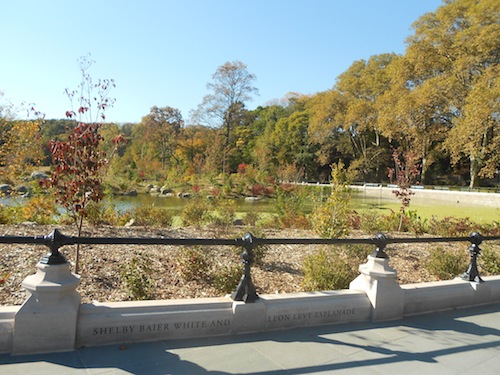

We finally made it inside the Prospect Park Lakeside Center a few days after the dedication of the Chaim Baier Music Island and the Shelby White and Leon Levy Esplanade. Now the newly restored area of the park is open on Saturdays and Sundays through November 25 from 10 am to 2 pm. For this first phase of the $74 million, 26-acre project, the Wollman Rink (installed in the 1960s) was removed, and the original park plan designed by Frederick Law Olmsted and Calvert Vaux was put back. More specifically, the Prospect Park Alliance’s landscape architects restored Music Island, the Esplanade, and the Concert Grove. Crystal Gaudio, the landscape architect, took us through the space and explained the many factors that went into this thoughtful, impressive restoration. The architects combed through historical documents and even found some old remnants of Olmsted and Vaux’s design during the restoration project. They reconstructed the waterfront, planted new wildlife, restored decorative elements, expanded the water area, and even discovered a fantastic old drinking fountain in the lake. Click through for the entire tour, as well as more details on the project…
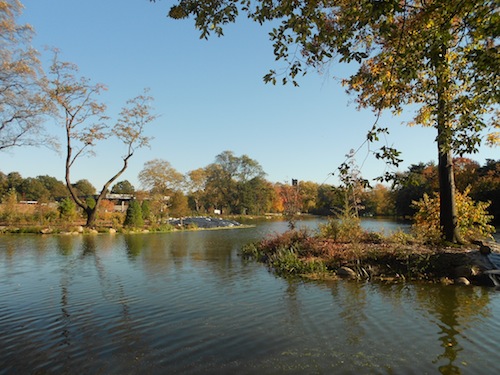
The lake was excavated to create the island and expand the waterfront.

Some of the stone for the railing, although not all of it, is original. Before the architects could expand the lake, they had to clean out all the sediment in the existing water. In doing that, they uncovered lots of trash and demolition debris, but they also recovered pieces of the old park. They found a few pieces of the iron fence and were able to mimic the design very closely.

A shot of the lake from the new grassy waterfront. Visitors will be able to sit and walk on the grass next year, but for now it’s blocked off.
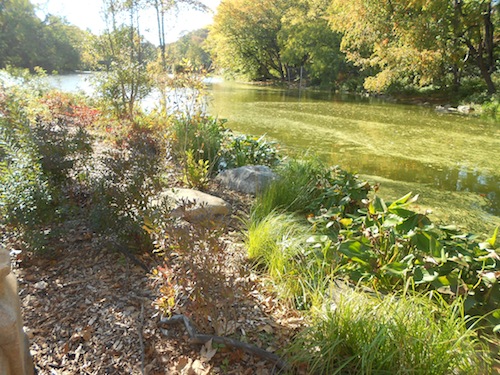
Olmsted and Vaux preferred exotic plants when designing the park. This restoration uses native plants instead.
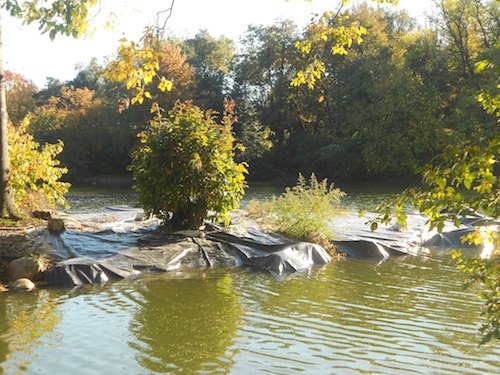
Some of the shoreline will be covered in a tarp for two years to protect it against the buildup of sediment. The architects removed many of the walls that blocked off the former lake and replaced the walls with boulders, which reinforce the shoreline in a more natural way. The boulders extend for about 10 feet past the shore. They’re also a popular spot for turtles to hang out.
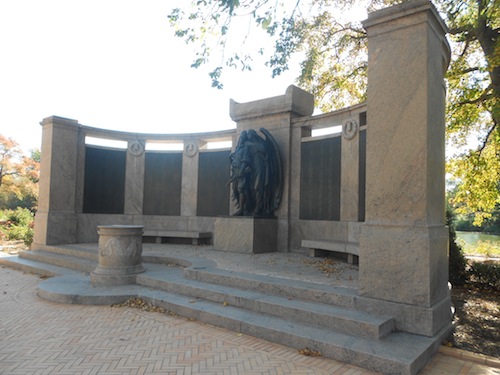
A World War I memorial, built in the 1920s, was restored. It lists all the names of the Brooklyn residents who died in WWI.
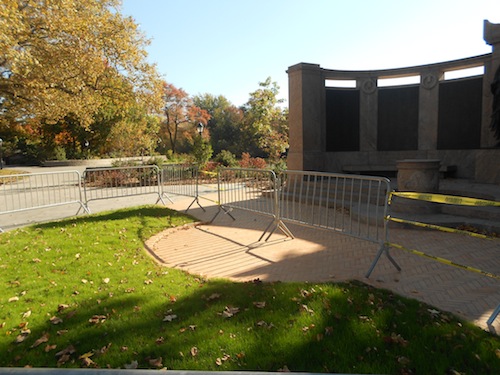
Architects re-created the rounded plaza based on old photographs. The reddish stone used in the plaza was specially made and replicates the stone found in the memorial itself.
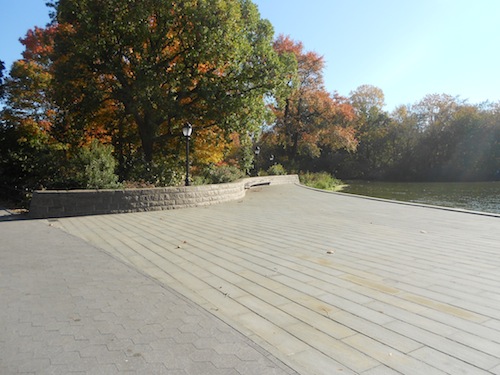
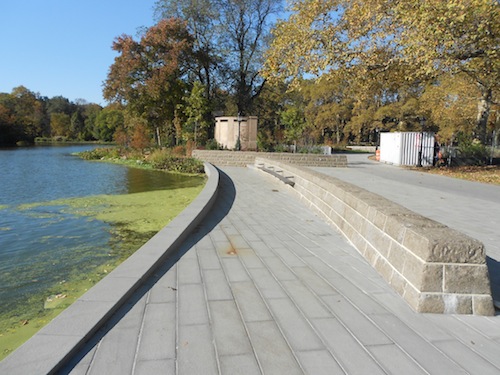
The main waterfront plaza was designed to be a place where lots of people can gather near the water.

The second waterfront plaza will soon be the location for a new boat dock.
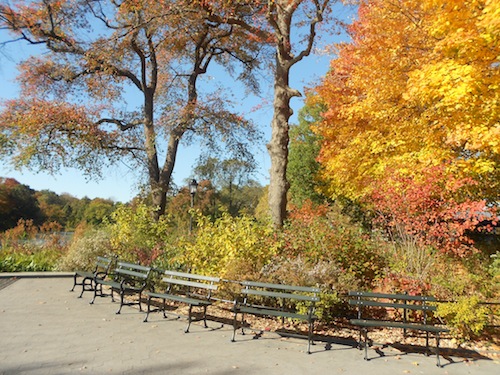
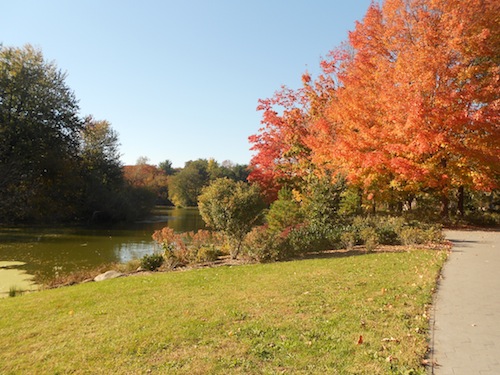
The architects designed around the sugar maple trees, which looked amazing yesterday. They were grown in the park specifically for the blazing fall colors.
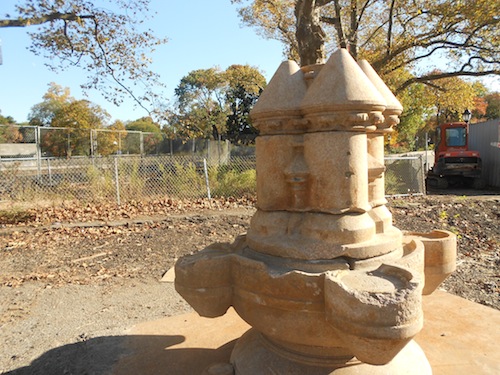
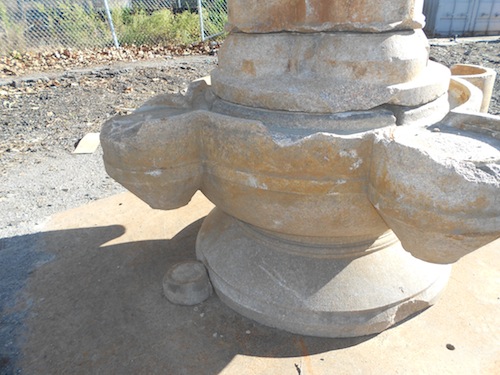
Among the debris pulled out of the lake, the architects found this at the bottom, broken into several pieces. They were able to reconstruct it and realized that this is an old water fountain from the original park design. It’s missing all the metalwork, which included a spout that ran water into each basin — there would be cups at the fountain available for park visitors. They have a few photographs of the fountain in its original glory and are looking for grants to restore the design, although not the working fountain. For now it’s just a curiosity out in the park.
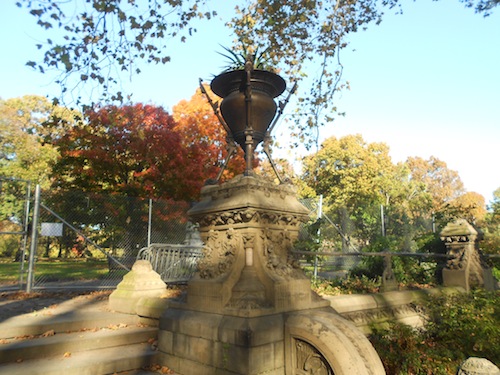
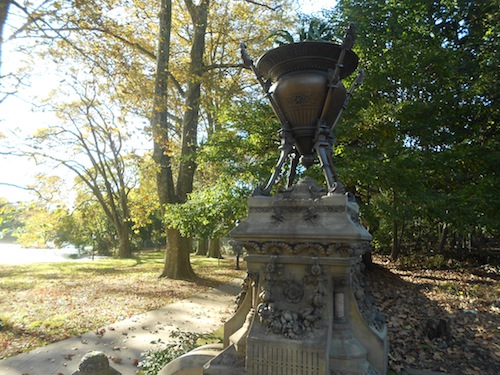
The six bronze urns, stolen sometime in the 1920s or ’30s, were re-created and reinstalled along the back wall. That’s yucca growing from the top, selected because it can stand the New York winters.
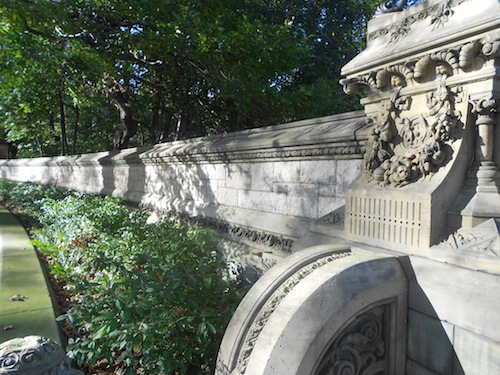
This wall is from the existing design and beautifully carved. Modest bushes were planted along the wall so as not to overshadow the carvings.

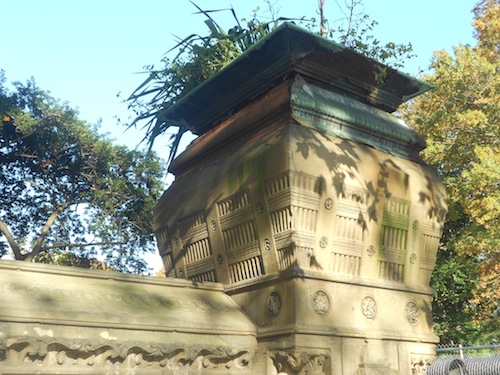
Urns from the original design. They are a little run down and will be restored.
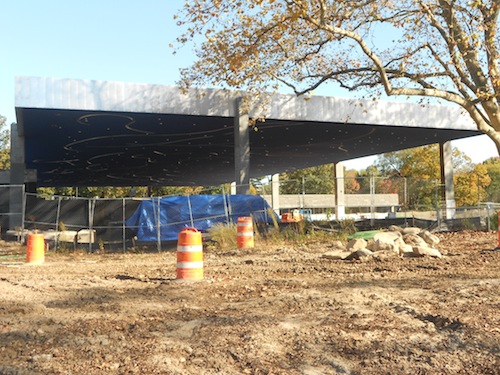
Still to come: a new 25,000-square-foot facility and two skating rinks to be completed in late fall 2013. You can see the swirly design on the ceiling of the rink. The rinks will host ice skating and hockey in the fall and winter and roller skating and a water playground in the spring and summer.

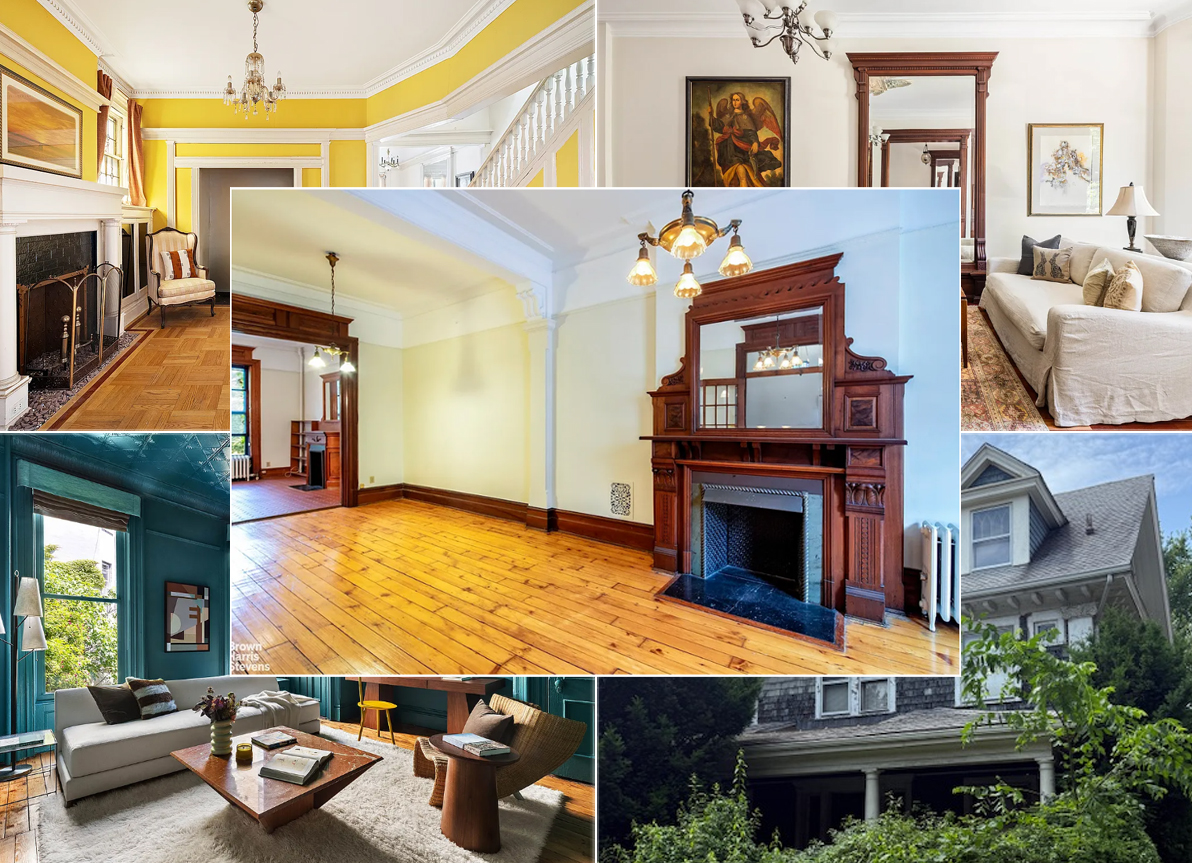



thanks emily for such a wonderful post